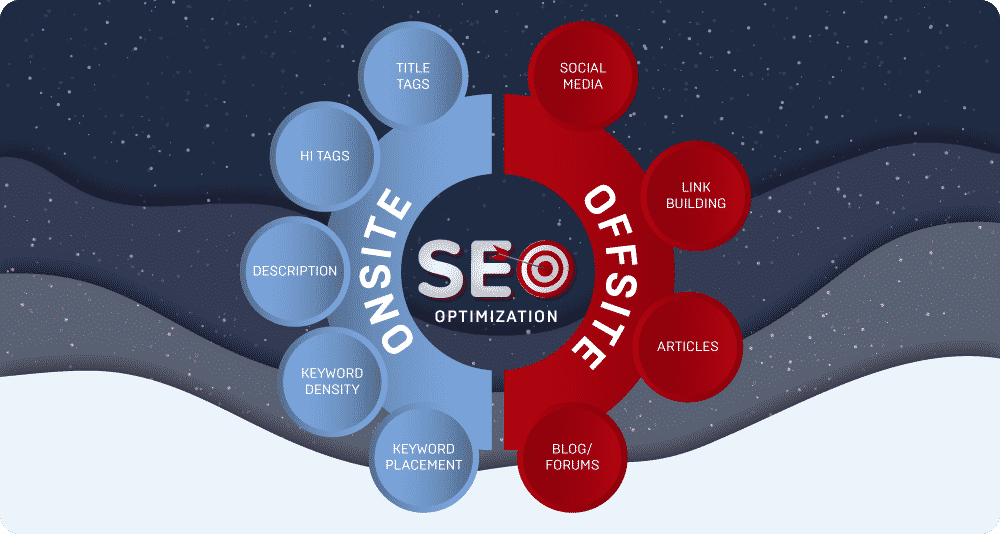

What is the difference between on-site and off-site SEO
On-site and off-site SEO are two different types of Search Engine Optimization. They are both very important in the SEO process. On-site SEO is focused on website optimization while off-site SEO relies on elements outside your website.
For search engines, the main difference between on-site and off-site SEO is in its purpose. The purpose of on-site SEO is to build trust, and make your content easy to read and understand by search engine bots. On the other hand, off-site SEO’s purpose is to give signals, mostly through links pointing to your website, that the content is worth showing in the search engine results.
On-site SEO factors
On-site SEO includes everything you do on your website to make your content search engine friendly. Mostly, on-site SEO factors are under your control and are relatively easy to implement.
The foundation of on-site SEO is in technical activities. Whereas the core of on-site SEO is content creation, based on a detailed keyword research. It is crucial to choose appropriate keywords that will draw the right audience, and implement them throughout your website’s content. The process of keyword research and distribution is usually called on-page SEO because it is done on individual pages and posts level.
The most important on-site SEO factors
There are over 200 factors of on-site and off-site SEO. They have different importance and weight, so you should focus your efforts first on the factors that matter the most.
For on-site SEO the most important factors are:
- domain name
- keyword research and distribution; title tags, meta description, URL, subheadings, content
- LSI keywords
- link structure
- images optimization
- anchor text and internal link building
- website performance and load speed
- mobile version of your website
- building trust; SSL encryption, Privacy Policy and Terms of Use page
- error management; broken links, duplicate title tags, etc.
- bounce rate management; quality content, readability improvements, user-friendly 404 error page
Off-site SEO techniques
Off-site SEO includes everything you and other people do, outside your website, for your brand and website’s content promotion. The main goal of off-site SEO is creating quality, unique backlinks.
Off-site SEO is partially under your control but it mostly relies on the opinion of others. Links pointing to your website are of major importance, but search engines also pay attention to brand mentions, discussions, and recommendations that do not specifically include a link.
Here are some of the best techniques to increase your brand awareness and the number of links recommending your website.
- link building
- promoting your content through social media
- video marketing
- press releases
- link submission; SEO friendly websites
- online reviews
- document sharing; Slide Share, Google Docs, DocFoc
- promotion and branding
- guest blogging
- paid advertising
- harmful links management
Is it possible to rank high on SERP with only one aspect of SEO optimization?
Yes! It is possible to rank high on SERP if you decide to do only on-site or off-site SEO.
However, your ranking status depends on your competitors, and how well they’ve optimized their content for the same keywords as you. If your competitors optimized their content better, their results will show up in front of yours. If you have many competitors, it is unlikely to expect high rankings, unless you work on both on-site and off-site SEO optimization.











